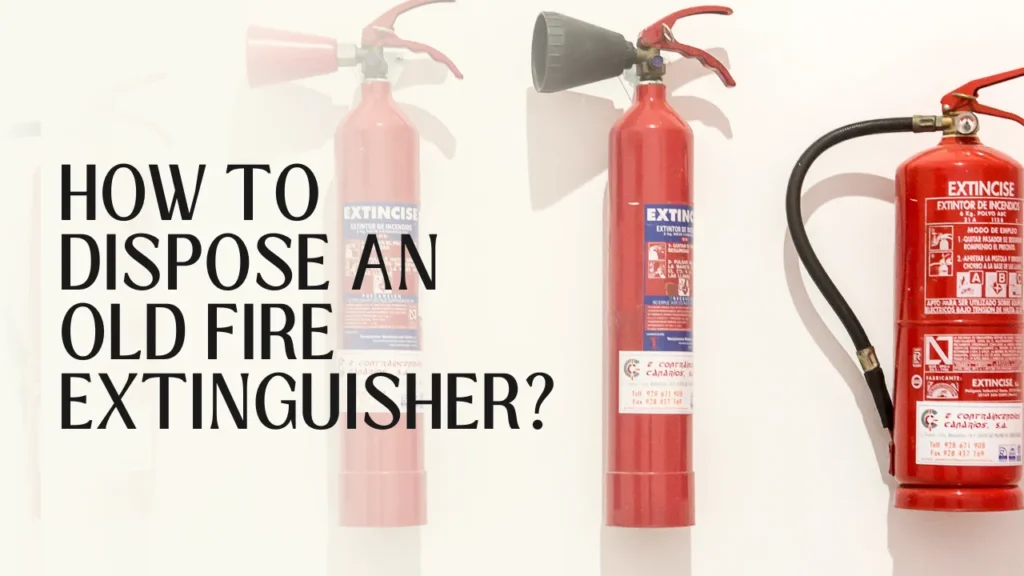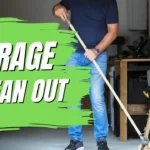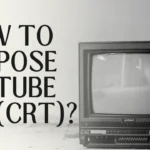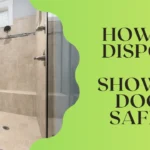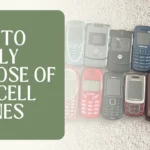Don’t put fire extinguishers in regular trash. If it’s pressurized or still contains agent, use your Household Hazardous Waste (HHW) program, a fire-equipment service, or a retailer/manufacturer take-back. If it’s empty, discharge outdoors until there’s no pressure, remove the head (de-valve), mark “EMPTY,” and follow local rules—some areas direct you to garbage, others allow scrap-metal drop-off. Never drill or cut a cylinder.
Want zero lifting? We’ll handle it. Book safe, compliant pickup via Junk Removal or Waste Removal.
Step 1 — Identify the type (it changes the rules)
- ABC Dry Chemical (home multi-purpose): common powder agent.
- CO₂ (B/C): pressurized carbon dioxide (no residue).
- Water / Water-Mist (A): water-based but still pressurized.
- Foam (AFFF/AR-AFFF): treat as hazardous; many states restrict disposal routes—don’t pour into drains/soil; use HHW or a licensed contractor.
- Halon/Halotron: do not discharge; send to certified halon recovery/recycling per EPA/NFPA standards.
Your best disposal options
- Household Hazardous Waste (HHW) / City Programs
Most municipalities accept pressurized/agent-filled extinguishers. Check dates, residency rules, and any fees. - Fire-equipment service companies
They can safely depressurize, de-valve, and route cylinders/agents for compliant recycling or destruction—ideal for businesses or multiple units. - Retailer / Manufacturer guidance
Big-box guides explain safe options and often direct customers to HHW or professionals; store-level acceptance for extinguishers varies, so call first. - Scrap metal (EMPTY cylinders only)
Local rules vary. Some jurisdictions send EMPTY de-valved shells to garbage; others accept them at scrap-metal facilities. Confirm locally. - Licensed junk-removal pickup (we handle it)
Best for heavy, rusted, or mixed loads. Same/next-day service:
How to dispose of an EMPTY fire extinguisher (HowTo)
- Verify empty — If the gauge isn’t stable or you still hear pressure, it’s not empty.
- Discharge outdoors — In a ventilated area, point away from people/pets; squeeze the handle until no sound. (Don’t discharge Halon/foam—use HHW/pro.)
- Wait & re-check — If pressure returns, repeat in short bursts until fully depressurized.
- Remove the head (de-valve) — After confirming zero pressure, unscrew the valve; wear gloves.
- Label “EMPTY.”
- Follow local rule — Some regions say garbage only; others allow scrap metal. If unsure, add it to your Waste Removal order.
Never drill, torch, or cut a cylinder—pressurized vessels can cause serious injury.
Costs & convenience (what to expect)
| Route | Typical Cost | Speed | Best For |
|---|---|---|---|
| HHW drop-off/event | Free–low fee | Event date | 1–2 units |
| Fire-equipment company | Service fee | Same week | Commercial/multiple |
| Retailer/manufacturer | Varies | Same week | Guidance; limited take-back |
| Scrap metal (EMPTY only) | Usually free | Same day | De-valved shells (where allowed) |
| Junk-removal pickup | Service fee | Same/next day | Heavy, rusted, mixed loads |
What not to do
- Don’t put pressurized units in curbside trash or blue bins.
- Don’t discharge foam (AFFF/PFAS) to drains or soil—use approved channels.
- Don’t discharge Halon—use halon recovery/recycling.
- Don’t drill, torch, or cut cylinders.
FAQs
1) How do I dispose of an out-of-date fire extinguisher?
If it’s pressurized or contains agent, use HHW or a fire-equipment company. Empty, de-valved shells follow local rules (garbage vs. scrap metal).
2) Where can I dispose of expired fire extinguishers near me?
Check your city/county HHW site or search for local fire-equipment service companies; many programs accept them.
3) What are you supposed to do with old fire extinguishers?
Route pressurized/agent-filled units to HHW or a service company; handle EMPTY shells per local rule (garbage or scrap metal).
4) Does Lowe’s recycle fire extinguishers?
Lowe’s provides a how-to guide; in-store recycling centers focus on bulbs/batteries/phones—call ahead to confirm any local acceptance of extinguishers.
5) Does Home Depot take fire extinguishers?
Home Depot’s guide explains safe disposal and generally directs customers to HHW/service companies; check your local store/policy.
6) Can I put an empty extinguisher in the recycling bin?
Not curbside. Some jurisdictions direct EMPTY shells to garbage; others allow scrap-metal drop-off—confirm locally.
7) How do I depressurize safely?
Discharge outdoors using the handle—never drill or cut a cylinder. If unsure, use HHW or a professional.
8) Is the powder or foam hazardous?
Avoid inhalation and drains; foams (AFFF/PFAS) have extra restrictions—use HHW or professionals.
9) What about Halon or Halotron units?
Don’t discharge. Send to certified halon recovery/recycling per EPA/NFPA standards.
10) Can the fire department accept drop-offs?
Some do, many don’t—policies vary. If not, use HHW or a fire-equipment service.


